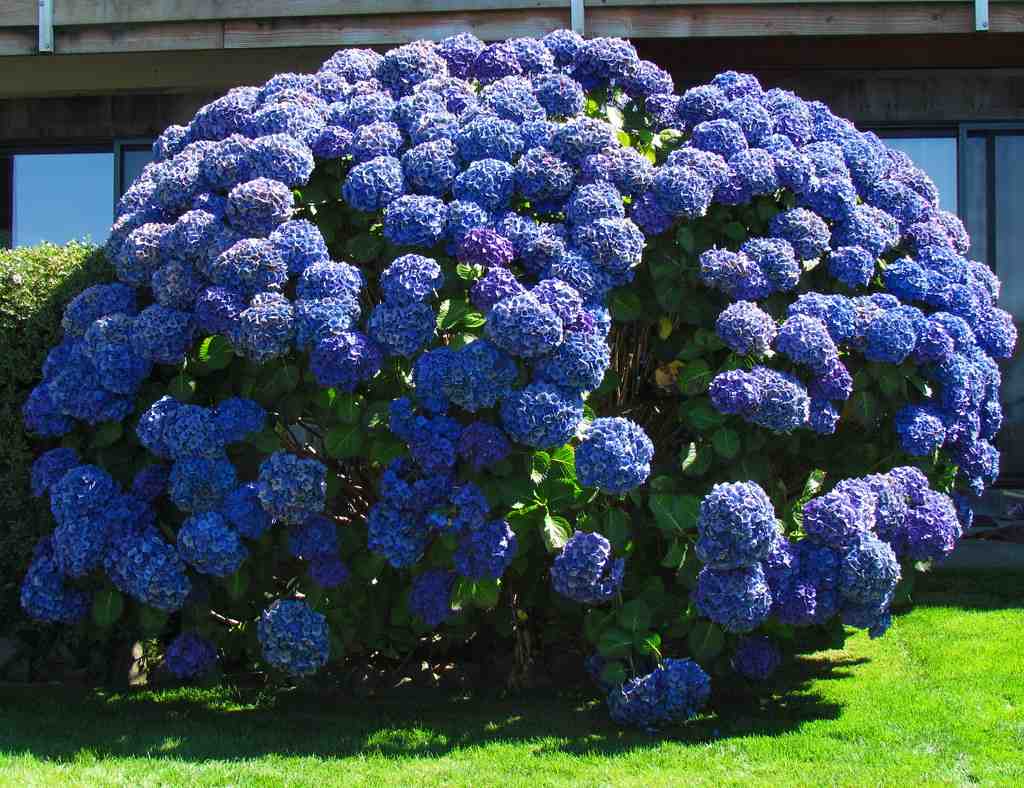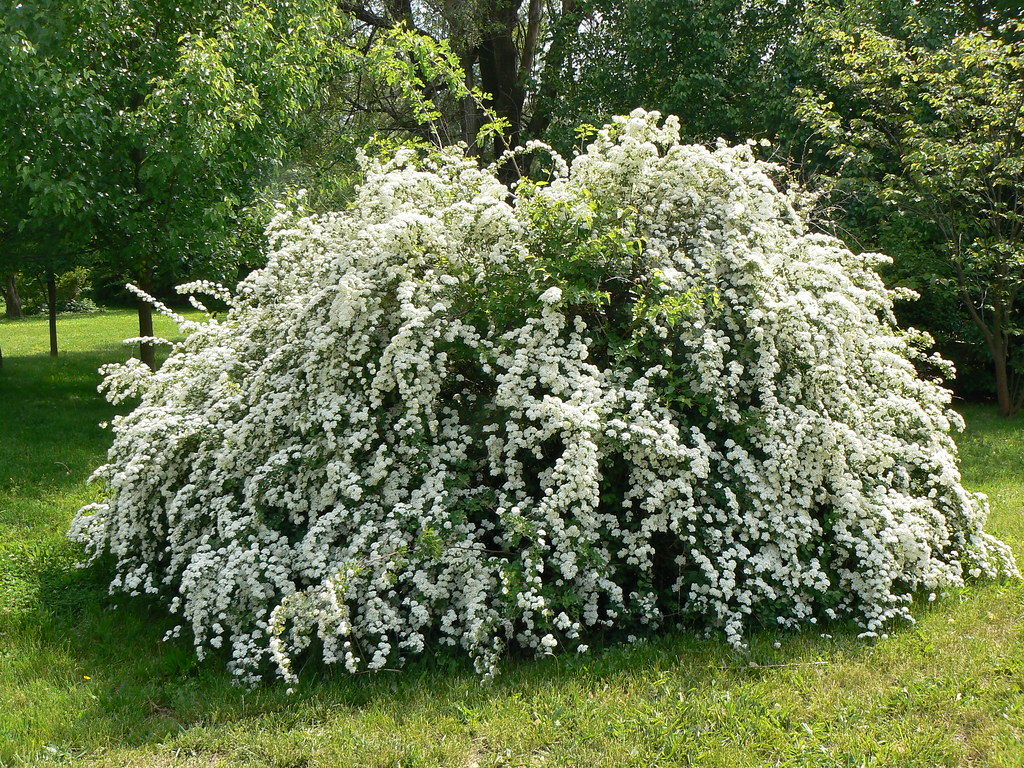Choosing the right shrubs for your Minnesota garden can be a rewarding task. Hardy plants that thrive in the state’s climate offer a quick way to add structure and beauty to your landscape. These resilient shrubs serve multiple roles, from creating natural borders to providing food for local wildlife. Unlike annual flowers, these perennial plants return year after year, bringing changing interest to your outdoor space through the seasons. Here are 11 of the best shrubs for Minnesota gardens, helping you create a lush and inviting yard that can withstand the state’s challenging weather.
American Cranberry Bush

The American Cranberry Bush is a widely distributed plant that grows well in zones 2 through 7 of the US Hardiness Zones. This shrub exhibits a range of hues with the changing of the seasons; in the fall, its green leaf turns a vivid scarlet. Known for its rapid growth rate, this plant can reach heights and widths of up to 12 feet in just a few years, making it a popular choice for quick-growing privacy screens.
Common Lilac

Known for its fragrant spring blooms, the common lilac grows best in early fall or early spring, while the earth is still warm. With time, this shrub gains height and attractiveness at a moderate growth rate. Lilacs prefer colder climes and are suitable for US hardiness zones 3 through 7. Because of their hardiness, they can tolerate lower temperatures, which makes them a popular option for gardeners in areas with severe winters.
Dogwood Shrubs

Dogwood shrubs have dramatic color variations throughout the year, with an array of hues from green to scarlet in the fall. They can be planted in the fall or early spring to get established before severe weather strikes. US Hardiness Zones 3 through 8 are home to these shrubs, which can withstand a variety of climate conditions. Gardeners often choose certain types, including ‘Baileyi,’ because of their reputation for endurance and adaptability in a variety of climates.
Junipers

Because of their strong resistance to disease, junipers are a popular choice among gardeners. Because of their resilience, they can survive in a variety of conditions within the US Hardiness Zones, which normally range from 3 to 9. Among their many varieties, the ‘Spartan’ variety is renowned for its quick, columnar growth, while the ‘Blue Star’ variant offers a compact form with thick blue-gray foliage. All of these qualities combine to make junipers a useful choice for landscaping work.
Serviceberry

Serviceberry trees grow well in zones 4 through 9, while they can tolerate many different U.S. Hardiness Zones. These trees have striking seasonal variations, starting with tiny white blossoms in the spring and ending with purple-black berries in the summer and reddish-orange leaves in the fall. ‘Autumn Brilliance,’ a popular variety renowned for its vivid autumn foliage, and ‘Regent,’ a compact shape perfect for smaller areas, are two popular kinds. These cultivars provide a range of growing possibilities to meet various landscape requirements.
Hydrangeas

Hydrangeas exhibit a diversity of hues throughout the year; depending on the acidity of the soil, the flowers are frequently blue, pink, or white. Though they can withstand a variety of temperatures, these hardy shrubs thrive in US Hardiness Zones 3 through 9, usually favoring a position with morning light and afternoon shade. Hydrangeas are well-known for growing swiftly; in just a few years, they can reach their mature size, filling garden spaces with rich foliage and blossoms.
Spirea

For gardeners seeking low-maintenance plants, espalinos are a good choice because they require little trimming and can be grown in a variety of soil types, making them simple to take care of. With foliage that can change to colors of yellow, orange, or red in the fall, it exhibits clear seasonal variations and frequently features a mixture of pink, white, or red blooms. Another noteworthy quality of spiky is that it is resistant to deer, making it a dependable choice for gardeners who have to deal with deer in their area.
Summersweet (Clethra)

Summersweet is a popular choice for gardeners who like to enjoy its beautiful show without worrying about quick overrun because of its moderate growth rate and scented blossoms. In order to give roots enough time to establish themselves before the hotter months, it is recommended to plant in the early spring while the soil is still workable. Popular cultivars give gardeners a variety of options based on space and aesthetic preferences. Examples are ‘Hummingbird,’ which offers small white flower clusters, and ‘Ruby Spice,’ which stands out with its pink blossoms.
Ninebark

The ninebark is known for its adaptability across various US Hardiness Zones, typically thriving in Zones 2 through 7. Its resistance to disease is one of its outstanding qualities, which makes it a hardy option for gardeners who like low-maintenance plants. The ninebark also varies with the seasons, producing pink or white blossoms in late spring and summer and foliage that changes to colors of orange, yellow, or red in fall, bringing year-round interest to the landscape.
Winterberry Holly

Gardeners may rely on Winterberry Holly because of its remarkable resilience to disease. This plant can tolerate a wide range of conditions because it grows well in US Hardiness Zones 3 through 9. It displays vivid red berries in the winter that contrast with its deep green foliage, indicating distinct seasonal changes. Not only are these berries an important element, but they also provide visual interest in the winter months, giving winter landscapes a distinctive aspect.
Buttonbush

Buttonbush is a climate-adaptable plant that grows well in US Hardiness Zones 4 through 9. Its distinctive foliage adds seasonal interest to landscapes as it changes with the seasons. Its dark green leaves have the potential to turn yellow or orange in the fall. Buttonbush grows at a modest rate; in the right conditions, it can reach heights of up to 12 feet in a few of years. This makes it a practical choice for gardeners who want to gradually fill in empty spots.